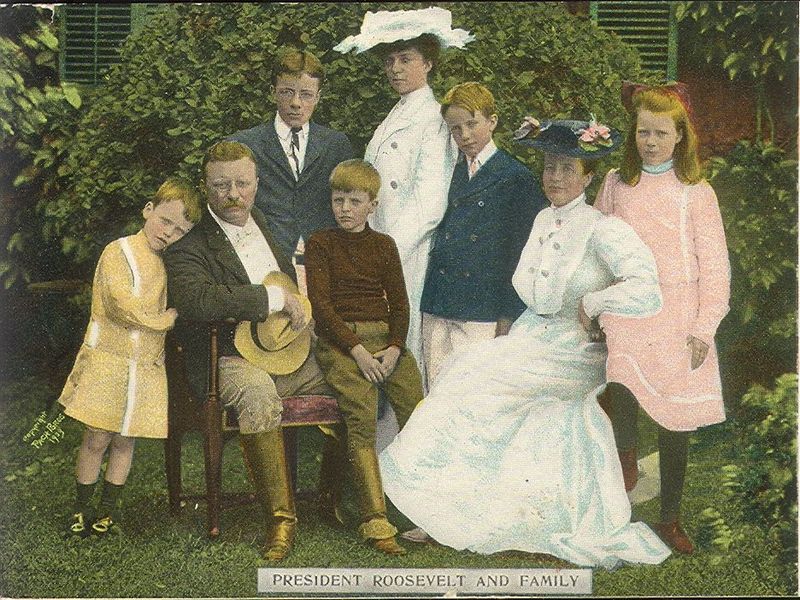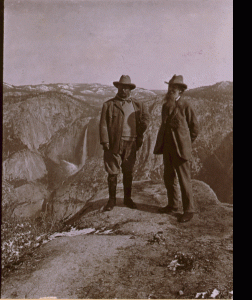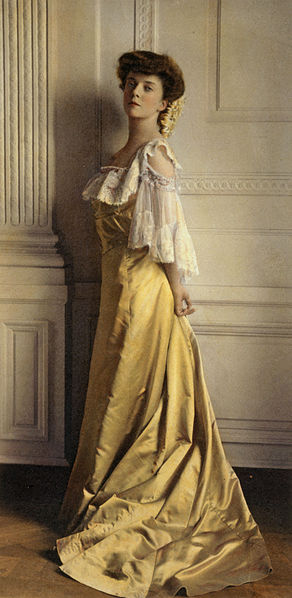
Figure 1 – The Roosevelt Family in 1903, colorized Pach Brothers Postcard. From the Wikimedia Commons, upload by Infrogmation and in the public domain. because of its age.
Our discussion yesterday about the Panama Canal got me thinking about whether there were any autochromes or color photographs of Theodore Roosevelt. So after a few Google, Bing, and Wiki searches I came to the conclusion that yes there were. The most definitively autochrome of the Roosevelt images is a rather unflattering photograph of Teddy holding an American flag from 1907 from the George Eastman House. There is also, by the way and as an aside, an absolutely gorgeous autochrome of our old friend Mr. Samuel Clemens taken in 1908 by Alvin Langdon Coburn.

Figure 2 – “Wiggle” stereo image by Underwood and Underwood of Theodore Roosevelt with John Muir in the Yosemite Valley in 1903. From the Library of Congress through the Wikimedia Commons and in the public domain.
There are a fair number of color pictures of Theodore Roosevelt. I wanted to include one of the more spectacular of these as Figure 1. It was taken by the Pach Brothers in 1903 and shows the entire Roosevelt Family. Pres. and Mrs. Theodore Roosevelt seated on lawn, surrounded by their family; 1903. From left to right: Quentin, Theodore Sr., Theodore Jr., Archie, Alice, Kermit, Edith, and Ethel. This is actually a contemporary colorized postcard version of a really gorgeous black and white image that is in the United States Library of Congress. I vote for the black and white as most beautiful. But what I wanted to point out here was the thirst that people had at the time for colored photographs. There was a huge demand for color in images and both the highly talented photographic colorists and the autochrome process filled this need. Innovation is ever driven by two factors: public demand and the belief that if we got clever something just might be doable. Note, that is the belief not the fact that something is doable that gets it accomplished.

Figure 3 – “Princess Alice” in 1902. Colorized photograph by Frances Benjamin Johnston. From the Library of Congress and the Wikimedia Commons. In the public domain because of its age.
Roosevelt, of course, live just as photography was moving into color and as moving pictures were appearing. There are, in fact, several film clips of the President. There is also a wonderful Underwood and Underwood stereo pair showing Roosevelt with John Muir in the Yosemite Valley from 1903 (Figure 2). Click on this image to “animate” the 3D effect. When Roosevelt woke up in the morning and his sleeping bag was covered with snow he exclaimed: “This is bully!”
Finally, I’d like to share as Figure 3 one more colorized image. This is of his daughter Alice Roosevelt Longworth (1884-1980). It is a coloration of a black and white portrait made in 1902 by Frances Benjamin Johnston. Alice was one of the great beauties of her day. She was outspoken and her antics led to her being fondly dubbed as “Princes Alice” by the public. When asked why he couldn’t better control his daughter, Roosevelt famously said “I can be President of the United States, or I can control Alice. I cannot possibly do both.”
I remember back in the late seventies reading an article about Alice Roosevelt Longworth who then lived in a house near DuPont Circle in Washington, DC. This was was covered in poison ivy. She was said to have a pillow on her settee that read “If you haven’t got anything good to say about anybody, come sit next to me.“
